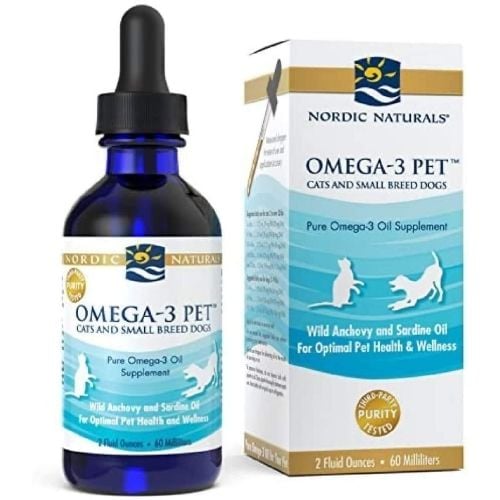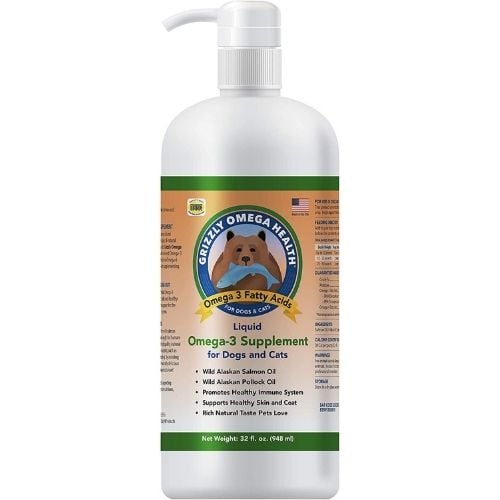
Cats are truly unique creatures. They are masters at hiding issues, and when they visit their veterinarian for a problem, it feels like Pandora’s box has been opened. Why?
What can seem like a "simple" lesion can actually have multiple causes. This is especially true with cat allergies.
Cats with allergies can have many different symptoms and many different causes. For example, when a cat starts licking at their belly, it could be due to fleas, food allergies, atopic dermatitis, stress, or even stomach pain.
Then there are times when some skin issues could be hereditary or idiopathic (no known cause) in addition to being due to allergies. Oh, this tangled web of confusion our kitties weave!
However, cats with allergies do have several common reaction patterns or symptoms, one of which is miliary dermatitis.
What Is Miliary Dermatitis?
Miliary dermatitis is a description of a type of allergic reaction pattern in cats. Cats with miliary dermatitis will have a bumpy rash on their head, neck, and/or body.
The name is derived from the Latin word for millet, milium, in order to describe the small crusted lesions that have a millet seed appearance.
It’s important to remember that seeing miliary dermatitis on your cat will not tell you what type of allergy they have.
You can see this pattern in cats with flea bite allergies, food allergies, or atopy (environmental allergies to pollen, mold, dust mites, etc.).
In some cases, it has even been associated with mites, lice, poor diet, ringworm and yeast infections, and, rarely, FIV infections in cats.
Those Bumps on Your Cat's Skin
Cats with miliary dermatitis will develop small, raised, light brown, crusted bumps anywhere on their bodies. They can be located only in a few areas, like the back of the neck or the legs, or they can be scattered over your cat’s entire body.
Cats can lick, bite, or scratch due to the fact that they are mild to intensely itchy — which only makes it worse. There are times when even touching your cat’s skin causes them to scratch, lick, bite, or twitch.

More often than not, the lesions are easier to feel than see. You may notice your cat’s coat thinning over the affected areas. As the condition progresses and becomes more severe, infections can develop, resulting in pustules (pimple-like lesions). Resist the urge to pop them!
Questions? If you'd like to speak with a veterinarian about the bumps on your cat's skin, Click here
How Is Miliary Dermatitis Diagnosed?
If you notice that your cat is licking, biting, or scratching more than normal or you feel ‘bumpy skin’ when you pet them, it is time to contact your veterinarian.
Your veterinarian will fully examine your cat and make a determination as to the cause of the miliary dermatitis. Identifying the cause is important so that the correct treatment can be provided.
So, what things will your veterinarian do to help diagnose the cause?
- Figure out the primary location of the lesions. While this isn’t always specific, it can be helpful. For instance, if the lesions are predominately on the back, shoulders, or the back of the neck, fleas are a likely problem. But if the lesions are mostly around the head and ears, ear mites may be to blame.
- Analyze samples of your cat’s fur and perform skin scrapings and cytologies under the microscope to look for mites, lice, fleas, and bacteria or yeast infections.
- Conduct an intestinal parasite analysis. They obtain a poop sample looking for intestinal parasites (i.e., hookworms, roundworms, tapeworms, etc.).
- Retrieve a blood sample for a complete blood count (CBC) and chemistry panel in order to determine if there are any undiagnosed medical conditions. Some diseases, like irritable bowel syndrome (IBS), can be partly caused by allergies that also affect the skin. Other conditions, like mast cell tumors, can cause the release of inflammatory compounds in the body that mimic allergic reactions. Hyperthyroidism can affect your cat’s immune system, making it easier for them to develop skin infections.
- Your veterinarian may need to perform a skin biopsy. They will surgically remove a small area of bumpy skin to look for signs of allergy and rule out other less common causes of your cat’s symptoms.
- Conduct allergy testing. This can be done with either a blood sample or skin testing by a veterinary dermatologist.
How Is Miliary Dermatitis Treated?
Treatment protocols are based on the specific cause that has been determined by your veterinarian. But one thing to remember, when one allergy is present, often there can be others. Therefore your cat may need a combination of treatments.
- If fleas are the cause, an aggressive flea treatment protocol needs to be done for your cat, their environment, and any other pets in your home. This will be a continuous routine done year-round.
- If your cat is found to have mites, lice, or some other parasite causing the issue, treatment must be done, and preventative measures must be put in place. Many flea/tick products can help with treatment and prevention.
- If intestinal parasites, such as worms, are the issue, your cat can take a dewormer to remove their current infection. Future infections should be prevented with year-round parasite treatment, which is available in multiple prescription products from your veterinarian.
- There are times when other causes have been ruled out, that your cat will be started on a food trial. What this means, is that they are started on a hypoallergenic diet and they are not allowed any other food sources, treats, or flavored supplements for a 12-week time period. This can help determine what ingredient, usually the protein, causing the allergy.
- Antibiotics may be needed if skin infections have developed because of the excessive licking, scratching, and biting.
- Shampooing with medicated shampoos (like this antibacterial and antifungal shampoo) can help relieve the itching, inflammation, and bacterial or yeast infection.
- In some cases, corticosteroids may be necessary for the itching and inflammation.
- Immunotherapy, based on the results of allergy testing, may be needed. This therapy can be given orally or as a shot. There is an 80% rate of success in improving allergy symptoms and reducing the need for other allergy control medications.
Typically it will take 9 to 12 months to start seeing some benefits and up to 18 months before full benefits are noted. Most of the time, pets will remain on immunotherapy for the rest of their lives, though pets will often be able to reduce how often they receive treatment over time. - For some cats, antihistamines have been shown to be beneficial. For appropriate dosing for a cat of antihistamines, like Benadryl®, check out our diphenhydramine calculator.
- Supplements, such as fish oil, can be beneficial but will likely not cure the condition. However, it can help lessen inflammation in the skin and decrease itching.
It is important to follow the treatment that your veterinarian recommends. Failure to comply can cause your cat to have a relapse and prolong the entire recovery process.
Remember, an itchy cat is not a happy cat, and if your cat ain’t happy, ain’t nobody happy! So, once the cause is determined, be sure to actively work on preventing it.







